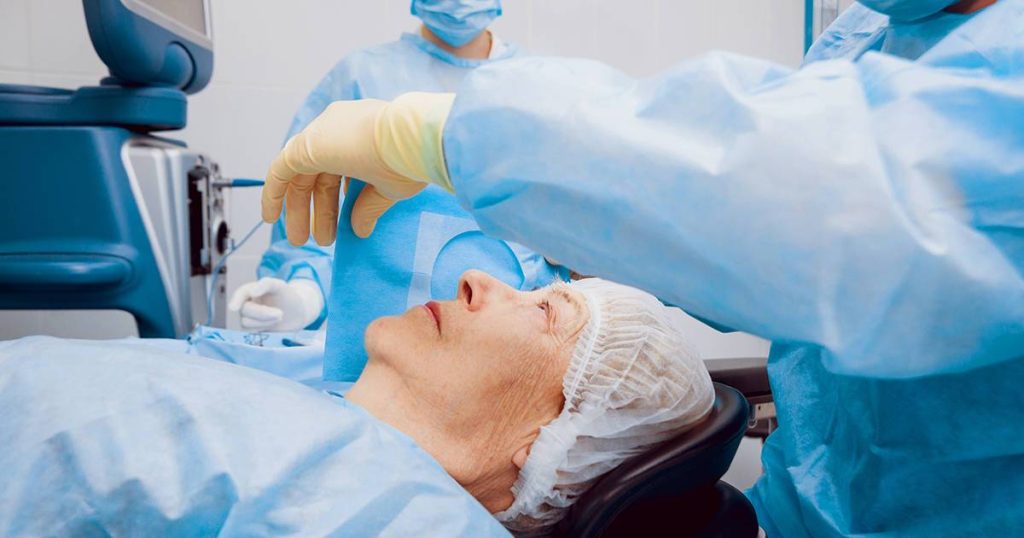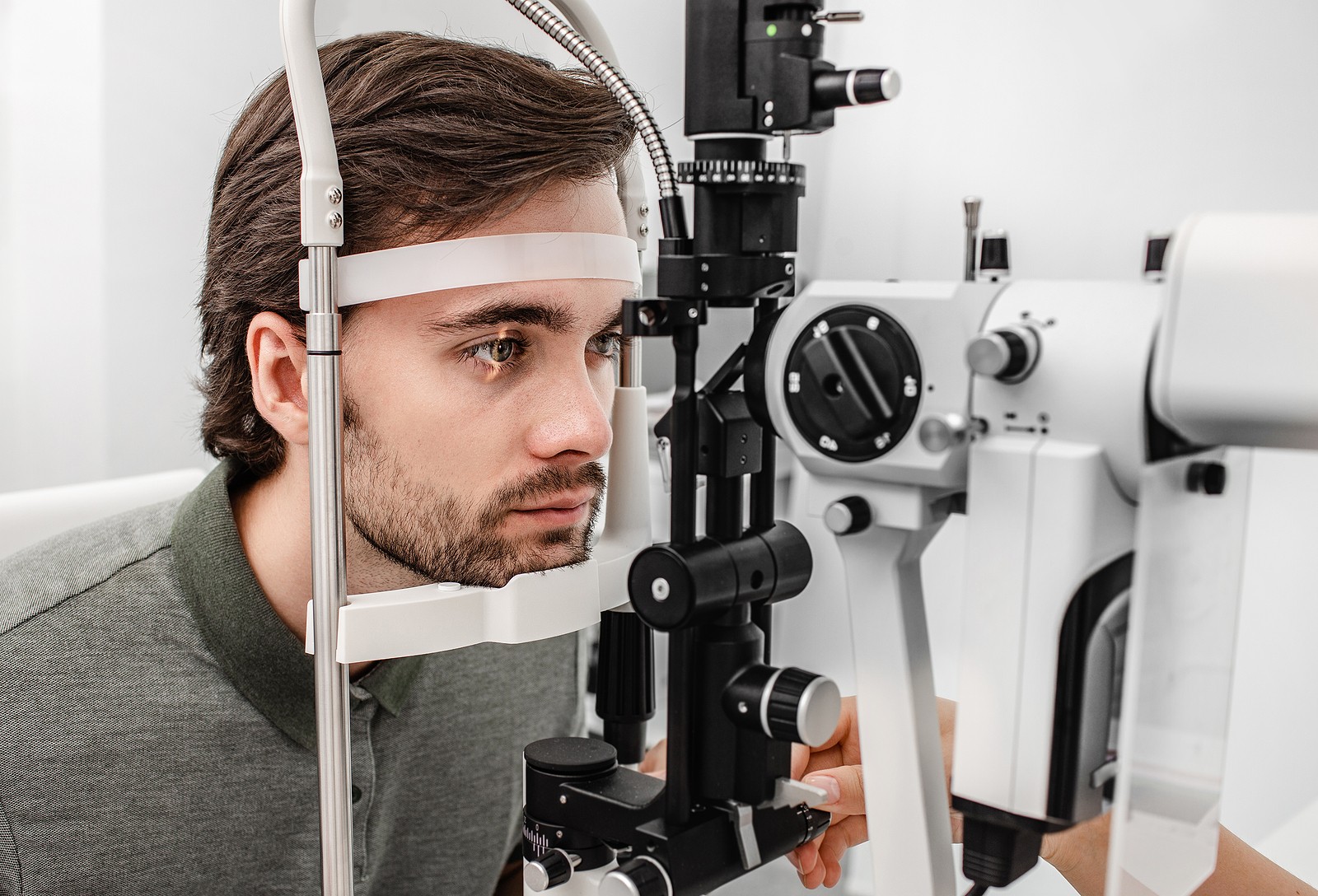Cataract Surgery in Special Clinical Settings
SightMD has been a leader in cataract surgery for many years. Our eye care practice has board certified cataract surgeons that specialize in routine cataract surgery as well as cataract surgery in complex clinical settings. We take the time to thoroughly examine each patient’s eyes to make sure that we provide the absolute best chance at a perfect result in cataract surgery. Our board certified eye surgeons continually strive to be the very best when it comes to cataract surgery technique and technology. Below are some examples of Cataract Surgery in Special Clinical Settings.
Cataract Surgery and Blood Thinners
At SightMD our doctors are often asked about blood thinning medications around the time of cataract surgery. There are several blood thinners that may increase risk of bleeding in surgery the most common being coumadin, plavix, aspirin, and vitamin E. These are all used to thin blood which is beneficial to blood circulation and heart health. In our modern cataract surgery technique we do not routinely use needle injections around the eyes, stitches or even an eye patch which results in a low risk of bleeding. It is however still important that you speak to your primary care doctor and ask if it would be safe to temporarily stop blood thinners. If it is not safe to do so, our doctors comply with your primary care doctor’s request and are comfortable doing cataract surgery on patients that are anti-coagulated. The reason for our comfort level with anticoagulation is that our cataract surgery is minimally invasive and bloodless in most cases. Our incision is made in the clear cornea, which does not have blood vessels. For this reason, opinions have changed in eye surgery and many feel that cessation of blood thinners is unnecessary.

Cataract Surgery and Flomax®
Flomax is the brand name of the medication tamsulosin and is used in men with prostate problems. Flomax has been successful in helping men with urinary retention due to prostate enlargement by relaxing the muscle inside the prostate which reduces restriction of urinary flow.
Floppy iris syndrome is the term used to describe the effect Flomax® has on the iris during cataract surgery. Flomax can affect the opening and closing of the iris, causing the pupil to constrict. If this occurs during surgery, or if the iris slips out of position, the surgeon may have a harder time removing and replacing the lens, which sits beneath it. If you are already taking these drugs, you do not need to stop them as they do not harm your eyes. You simply must inform your ophthalmologist that you are taking them (or have taken them in the past) prior to having any eye surgery. Fortunately, the prognosis for cataract surgery is still excellent because the forewarned ophthalmologist can take compensatory steps to perform the operation successfully.
Cataract Surgery and Fuchs Dystrophy
Fuchs’ dystrophy is an inherited corneal weakness that can be progressive. The cornea is the front window of the eye or the clear dome that covers the iris. In Fuchs’ dystrophy, the innermost layer of the cornea called the endothelium becomes deficient. The purpose of the endothelium is to pull fluid out of the cornea, keeping it clear. If the endothelium does not function properly, the cornea can become swollen leading to a hazy cornea. A cloudy cornea makes vision blurry as if the patient were looking through a dirty window. In the worst cases, the endothelium needs to be replaced in a corneal operation. When the cornea is weak like in Fuchs’ dystrophy, it is not able to deal with the stress of cataract surgery as well as a normal cornea. There can be more severe corneal swelling and in rare cases, the cornea may fail. If the cornea fails, the patient would need additional corneal surgery. In most cases of Fuchs’ dystrophy, our cataract surgeons are able to fully preserve the cornea by using special gels during cataract surgery called viscoelastics that are known to be more corneal protective. In addition, our eye surgeons minimize ultrasound energy and use cataract surgery techniques that are minimally disruptive to the cornea.
Cataract Surgery and Pseudoexfoliation
Pseudoexfoliation is an eye condition that presents with a dandruff-like whitish material being deposited on the surface of the lens of the eye. This can present in subtle fashion or can be quite striking. We now realize that pseudoexfoliation material can be found throughout the body, but we only know the significance of the pathology in the eye. A cataract is a clouding of the natural lens of the eye. The natural lens of the eye is attached to the wall of the eye by connective tissue strands called zonules. These zonules are responsible for support of the lens of the eye. In cataract surgery, we depend on the support of the zonules to complete cataract surgery safely. In pseudoexfoliation, the zonular apparatus can be quite weak making the lens dangerously unstable. In the worst cases, the lens of the eye can fall to the back of the eye during cataract surgery necessitating a second eye surgery to retrieve the dropped lens. Our board certified cataract surgeons specialize in difficult cataract cases like patients with pseudoexfoliation. We take special precautions with these cataract surgeries such as using iris hooks or iris rings for better visualization. We also use more gentle cataract surgery techniques so that we minimally stress the zonules that are already weak. In most cases, even the more difficult cataract cases, surgery proceeds in routine fashion without complications.
Recent advances in cataract surgery technology have allowed the cataract surgeons at SightMD to deliver the safest and most efficient cataract treatment to date. Contact SightMD today to schedule an appointment with one of our doctors to discuss your vision health at one of our convenient locations!

What Will Happen During My LASIK Consultation?
If you have decided to have LASIK eye surgery performed, you are likely very excited about this literal change…

Common Problems after Cataract Surgery
What are the most common problems after cataract surgery? Cataract surgery is a highly successful and commonly performed procedure…

Will I need reading glasses after LASIK Eye Surgery
LASIK (Laser-Assisted In Situ Keratomileusis) is a popular refractive surgery that can correct nearsightedness, farsightedness, and astigmatism, providing clearer vision…